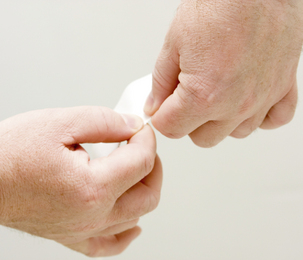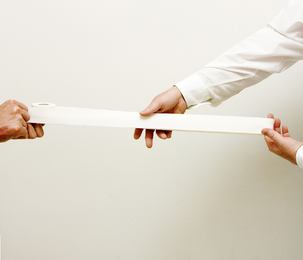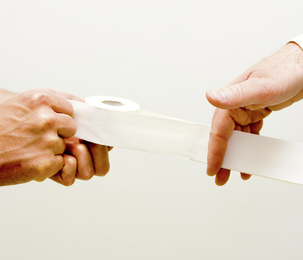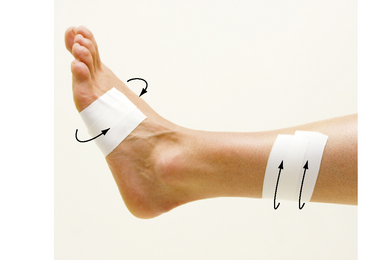Chapter 5 Key Taping Techniques
Most taping applications are variations on basic key taping strategies. The differences in taping techniques lie in the manner and application of each strip of tape and the type of taping material used. Each particular taping strategy has to meet the requirements and needs of the patient, remain within the rules of the sport, if relevant, take into account the type of joint and related structures to be taped, as well as the type and severity of the injury.
The strips illustrated include:
PREPARATION OF PRACTICE STRIPS
To acquire taping skills, practice strips can be prepared. Because the precise applications of figure of eight and locking strips are tricky to learn, it is advisable to apply numerous practice strips to perfect the technique. Practice strips can be applied to the limb as though they were regular strips and the various complicated techniques can be practised without wasting tape. By experimenting with the ‘take-off’ angle and the degree of lateral shearing, the taper can learn to accommodate for the varieties of ankle shapes and thickness. It is important to be able to control the direction of the strip and thus adapt the final supporting result.
COMMONLY USED TAPE STRIPS
ANCHORS
Description:The first tape strip applied to each tape job. They may be non-elastic or elastic, depending on the expansion requirements of underlying structures.
Purpose:To form a base for subsequent supporting strips of tape.
< div class='tao-gold-member'>
Stay updated, free articles. Join our Telegram channel

Full access? Get Clinical Tree














